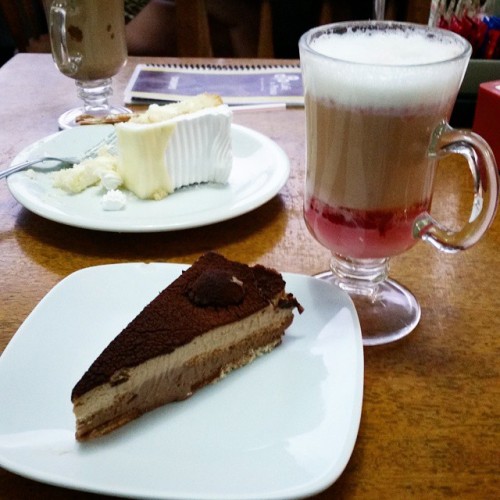Bolo - Tumblr Posts

Quando a gente não está bem nada sai bom. Estou chorando não pq meu bolo tá feio...mas pq parece minha vida, todo capenga e eu tentando arrumar.
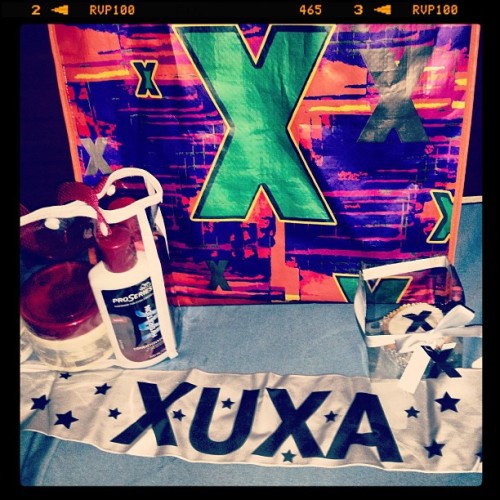
Olha o brinde lindo que ganhamos ontem na gravação da TV Xuxa Especial @xuxamenegheloficial #lindos #bolo #presentinhos #ecobag #Wella (em Minha Laje)





Ysmu, the forgotten valley
Have some worldbuilding for a story that I accidentally got genuinely really attached to :)





🗡️🗿🇺🇲👑🚓The power of Keith David's range is incredible, he's still the goat!🚓👑🇺🇲🗿🗡️
The Second Blade: Diplata - Extinct Bolo
Continuing the countdown to the launch of the Gubat Banwa Kickstarter coming up on the 10th of October- 6 days to go! Gubat Banwa is a tactical war-drama TTRPG set in the Sword Isles, a fantasy setting inspired by Southeast Asian cultures and folklore.

To promote its launch, I'll be posting some of the weapons I've been drawing for the game every day until the campaign kicks off in earnest. These were meant to be Swordtember entries, pardon the lateness I suppose. 2/7 blades so far, let me introduce you to the DIPLATA.

The diplata is a short-to-mid-length blade with a distinct handle, with most specimens sporting a horn-like protrusion facing the same side as the edge.

The blade shape itself I feel is something common across most toolblades in the Philippines, not much longer than one's forearm with a more-or-less rounded out tip- though the diplata seems a bit wider than most. I would say the most unique features definitely lie in the shape of the hilt, and the circular guard. Most Philippine blades don't have anything in the form of hand protection, so a wide guard like this stands out.

This one was a little difficult to find photo references for, as apparently they're quite rare. Some blade scholars call it an "extinct" blade, meaning those who traditionally forge authentic ones supposedly aren't around anymore.

(Photo from Victor Balaguer's museum near Barcelona; Diplata on the blades hanging on the wall, the two next to the rightmost blade) "Traditional" blades refer to those made by the same people to whose culture a blade belongs. To illustrate in the simplest terms, a katana made by a traditional Japanese swordsmith would count as a traditional blade. A messer made by a traditional German blacksmith would count as a traditional blade. I'm sure there's more internal nuance there, but that's the quickest reference point I could come up with. Take note however that the Philippines is composed of many, many different cultures who all happen to exist in the same archipelago with varying levels of overlap- there is no singular, unifying blade culture, so categorizations like "Traditional" and "Modern" (often referring to modern reproductions) aren't always as exact as convenience may demand. In particular, material exchange between cultures makes a mess of this categorization, not just because the blades themselves could get traded (or stolen or lost) and physically make their way to other places beyond the imaginary borders of their "homelands", but because the smiths themselves (or their knowledge and techniques) may travel around. Smiths in different places may also see blades from different cultures that they might feel like imitating or emulating in some way- that's how certain Philippine blades obtained D-guards- but that's a story for another time. The diplata is oft-attributed to the Aeta peoples, specifically those who come from Mt. Pinatubo in Zambales. Not much confusion as to whose culture these blades belong.

It is a little disheartening that most of the refs I could find were photos from foreign museums and loose images in books and blade forums. I will not speculate here as to how these blades ended up in these places, but it isn't hard to guess.

(Image from a Spanish museum)

(Image from Philippines, Early Collections, Museum of Ethnologie Vienna)

(Image from The Philippine Journal of Science Volume 81) I'm not a hardcore blade scholar, but even I recognize how inseparable blades are from the myriad cultures of the Philippines. I'm forever thankful to the random communities of blade enthusiasts who dedicate a not-insignificant portion of their time (and wallets) to supporting local artisan blacksmiths to grow their collections, and keeping track and tracing which blades came from which places and peoples. Our blade cultures are alive and still developing, but they could still use a little help sometimes, just so we don't lose them.

(Photo from the collection of Zel Umali) In any case- while it's not exactly a scholarly work in the academic sense- part of Gubat Banwa's violence is pushing a fantasy setting of our own making, as seen by our own eyes, as told on our own terms. This is no foreign museum; This time, SEAsian cultures take center stage.
The Gubat Banwa Kickstarter launches in 6 days! Check it out here:

It would be a huge help to this very small team from the global south if you could help us get the word out! We straight up can't afford to advertise on the same scale as bigger players in the field, so we're relying heavily on word of mouth. You can find out more about the game on its itch page.
The Third Blade: Hinalung - Handheld Speartip
Five days left to go before the launch of the Gubat Banwa Kickstarter campaign! Gubat Banwa is a TTRPG that allows you to play as warrior Kadungganan in the Sword Isles, a fantasy setting as colorful and intricate as the Southeast Asian cultures from which it draws inspiration.

I've been posting the weapons I've been drawing for the game as kind of a countdown, leading up to the launch on October 10. I was planning to do this for Swordtember, but sometimes you gotta shift the goalpost a little bit. 3/7 blades down, behold the HINALUNG

This multi-purpose blade comes in a few different shapes and sizes, but in general they are symmetrical and double-edged. They don't get much longer than one's forearm, and more often than not have handles wrapped in rattan lashings.

(Blades by Tatang HImanggo and one of his students- a certain Arnold; As shared by Biboy's Sharp Edges) If I'm not mistaken, the term "hinalung" is Ifugao- referring to a certain group of indigenous peoples in the Philippine Cordilleras- though the usage of the blade itself was widespread across the mountains of north Luzon. Nowadays, it isn't just Ifugao smiths making them, and a number of contemporary smiths from across the region seem to lay claim to the blade. In any case, the blade is of the Cordilleras, unconquered by Spain.

(Blades by Ifugao Traditional Blades) One more thing of note is the open scabbard, which seems to be common among blades in that region- not just the hinalung. Some of them boast enough space for more than one blade to be sheathed, and are often sold as novelties. The first example below has a large hinalung in the middle, joined by a pair of pinahig. It can very quickly get out of hand. These X-in-1 sets are usually sold as novelties.


(Blades by Orinn Mongalini/Panday Anitu Mumbaki)
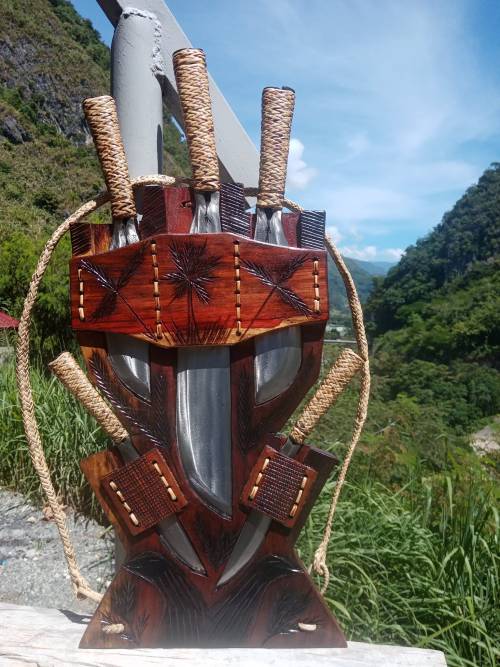
(Photo from Orinn Mongalini)

(Photo from Ifugao Artistic Blade)
Now for the fun part! You may be wondering why the handle is shaped the way it is, with that triangular opening near the base of the blade? Or perhaps you read the title of this post and you already know where this is going?

They double as spearheads! The handle itself is steel folded in to create a hollow socket, allowing the hinalung to be mounted on a wooden shaft, turning it into a spear. Supposedly, this spear-form was used for hunting. You can see the hollow socket more clearly here:


(Blade by HanYan Blades)

(Screencap from a video by AJ Blade Reviews testing the blade as a spear; Blade by Lakay Paul Dulnuan Sr.) As mentioned previously, the Philippine Cordilleras were never conquered by Spain, and as such were able to carry their traditions with a little more ease into the present day. It is very much apparent in the blade culture. Present-day smiths in the Cordilleras still forge hinalung, some of them stating they do it in the traditional way, others admitting to hewing to more modern methods.

(Antique from the Peabody Museum of Archaeology and Ethnology)

(Modern build by Lakay Pabian, photo by Ramon Bathan) Like I said before: Blade culture is alive and still developing. One of the Five Major Mahamandalas of Gubat Banwa pays homage to and gleans inspiration from living cultures like those I mentioned here. If you want to know what the first half of that sentence means, check out the game and its Kickstarter!
The Gubat Banwa Kickstarter launches in 5 days! Check it out here:

I've watched this game be started, written, and developed by like- one guy, who just managed to drum up enough interest and meet enough people willing to help shape the dream, and make it what it is today. It could not have gotten this far without all of them. Still, it remains a very small team of creators from the global south, with very limited resources. We would dearly appreciate any and all help in getting the word out about the game!
The Fourth Blade: Panabas - "For Chopping"
Four days to the launch of the white-hot lightning that is the Gubat Banwa Kickstarter! Gubat Banwa is a TTRPG supported by the twin pillars of tactical martial arts and contemplative war drama. Meditate upon love and violence as warriors of a burning world. Will you stem the tide of blades? Or is it rising by your will?

I'll be posting the weapons I've drawn for the game as a countdown until the launch on October 10. This was supposed to be a Swordtember series, but we needed a little more time to gain momentum. 4/7 blades, past the halfway point, let us proceed with the PANABAS
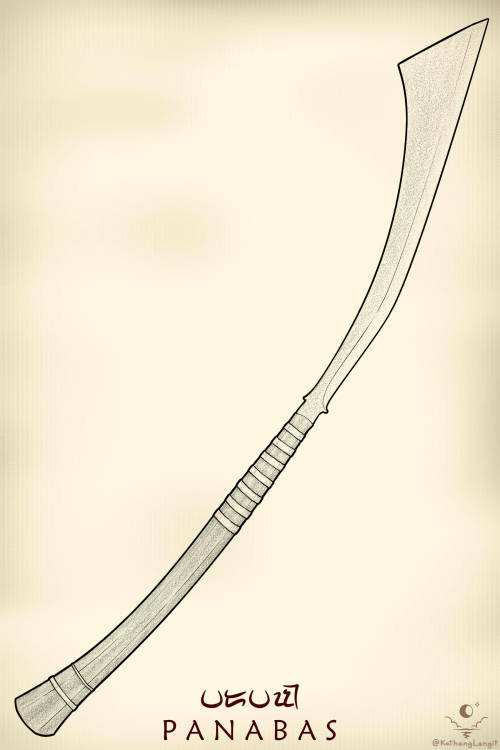
Towering amongst what blade collectors categorize as "Moro weaponry", the panabas is quite possibly the largest blade I've ever drawn. Like- I'm not lying, I drew all the blades in this series to scale relative to each other, and the panabas has by and large been the one determining how big my canvas needs to be. The edge is on the longer curve, the spine of the blade is thicker near the handle, and the handle is about as long as the blade (if not longer).

(Photo from Kristian Josef Acedo)
The form belies the function; it isn't difficult to guess how this blade is used just by looking at it. The name- if I'm not mistaken- is an even bigger giveaway. Panabas supposedly comes from "pang-tabas" which literally means "for chopping". It also goes by the name of nawi.
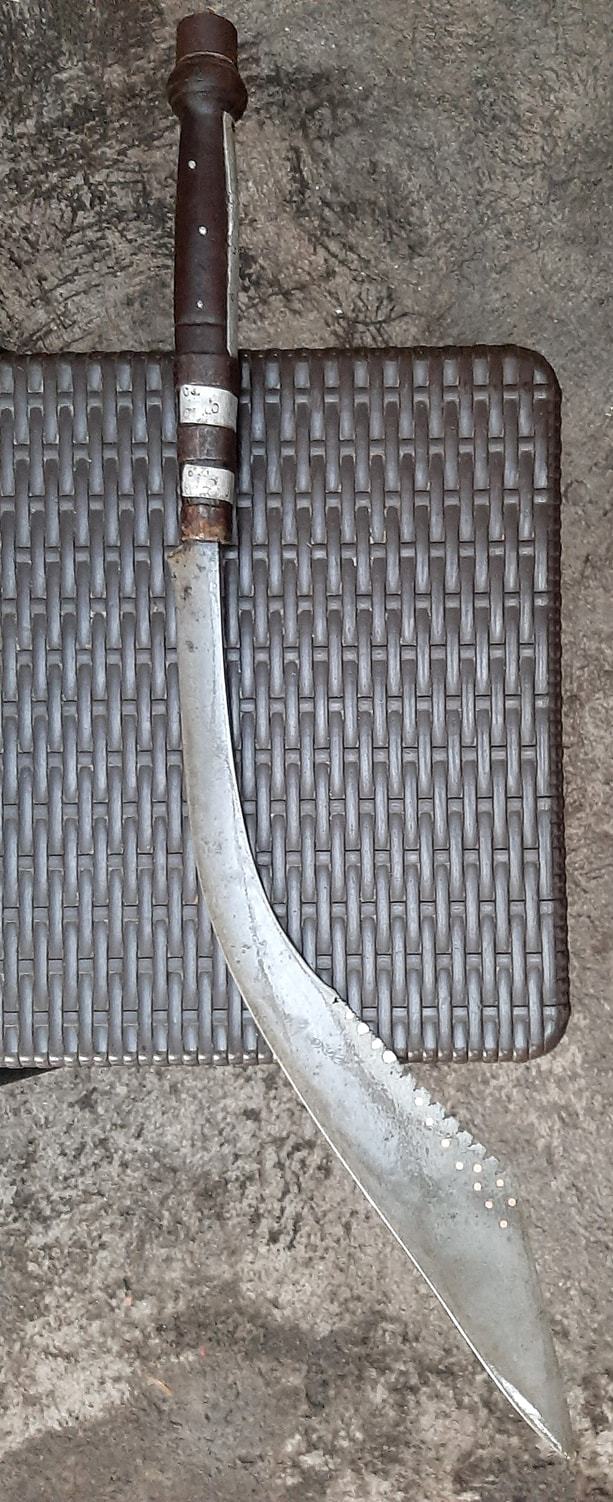

(Photos from Raymundo Lucero) As large as its reputation might be, the choppers aren't always massive. Their utility ranges from agricultural to combative to ceremonial, and the size and shape usually matched the nature of the work.
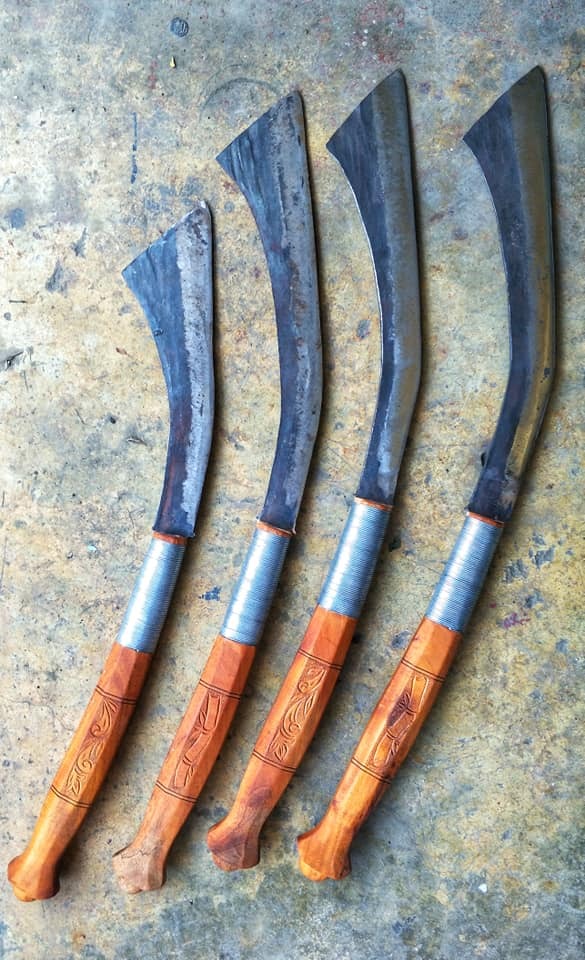
(Tools from Datu Paglas, Maguindanao)
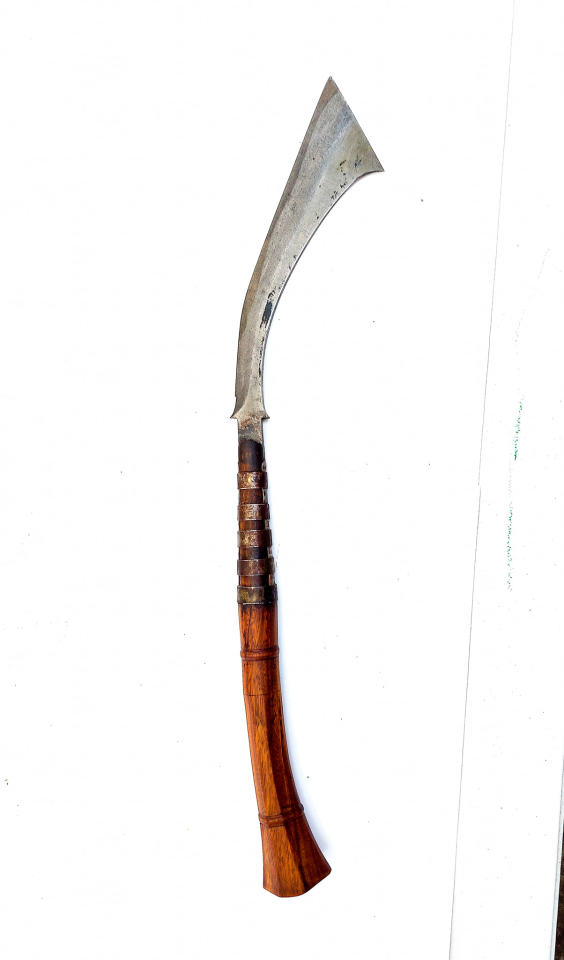
(Photo from Dondon Dimpas)

(Exhibit at Museum of the Filipino People- biggest one) The panabas is most often attributed to the peoples of Maguindanao, though the range of its use and the variants of its make span across large portions of the Mindanao area.

(Antiques from the collection of Richard Hudson, size comparison with a kalis) A popular tale (especially amongst Filipino Martial Artists) states that the US Marines wore leather collars to protect their necks during the American Occupation in Mindanao, due to blades like these that gave the troops pause, and feel that the extra protection was necessary. Supposedly, this is where the term "leatherneck" came from. Although the veracity of this latter claim is a bit on par with the claim that the Colt .45 was invented specifically to stop the same Moro warriors, the story has already stuck.

(Antique from Lake Lanao)

(Photo from The Metropolitan Museum of Art) We touched upon "Traditional" blades last time, referring to blades made by the same people to whose cultures those blades belong. This time we look at the other side of the coin. "Modern" is the term collectors here often use to refer to reinterpretations, usually by modern smiths who are separate from where a blade traditionally belongs. The point of reference I used for "Traditional" blades before is a katana forged by a traditional Japanese swordsmith. If- instead- a white blacksmith in America were to forge a katana using their own smithing methods, that would be considered as a "Modern" blade under this categorization. I'll leave it to you to spot the differences in these next few photos:

Traditional panabas with a rattan ferrule (Photo from Lorenz Lasco)

Modern blades by Jun Deuna (Espanola) and RE Pandayan (Quezon) (Photo from Dennis Andrew Golez)

Traditional blades (Marawi and Maguindanao) (Photo from Dennis Andrew Golez)

Modern full-tang build by Traditional Filipino Weapons (I know who forged this but I won't doxx their location) (Photo from the TFW website)

Modern full-tang build by Batangas Armory (Batangas) (Photo from Job Abat)

Pair of panabas and a binuaya (leftmost) by Traditional Moro Blade, Maguindanaon (Maguindanao)
Say it with me this time! Blade culture is alive and still developing. Mindanao was never conquered by Spain- the fierce resistance of the Moros made sure of that- and again it shows in the blade cultures. Though the panabas is now popular enough to have modern reinterpretations made by smiths across the Philippines, the traditional panabas and the people who make them are still around.
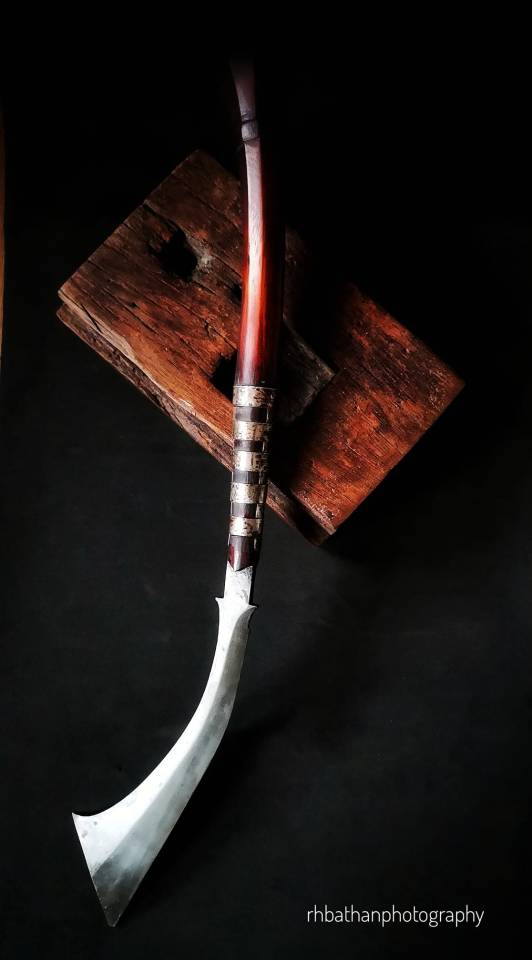
(Photo from Iniingatang Talim at Kaluban, taken by Ramon H. Bathan)
One of the Five Major Mahamandalas of Gubat Banwa pays homage to and gleans inspiration from living cultures like those I mentioned here. Yes- I repeated the text from the previous installment, because it's equally true, here. Additionally, the panabas shows up as the iconic weapon of the Martyr- one of the 25 Disciplines (read: "character classes") whose moon-bright martial techniques you could pick up in-game. Anyway, go check out the Kickstarter!
The Gubat Banwa Kickstarter launches in 4 days! Check it out here:

Not long now- this is a very small team of creators from the global south knocking on your doors asking for help to get the word out. I truly cannot understate how small this team is, and how amazing it is that they've come this far- we just need a little bit of a boost! With your help, this grand ambition can be realized. We would greatly appreciate any help rendered towards getting more eyes on this game!


